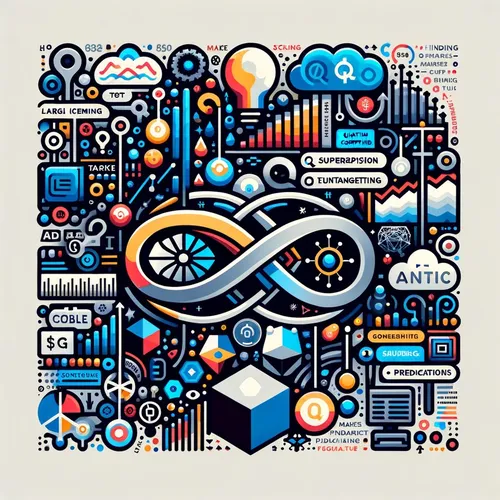Quantum Powers Up: Shell's Energy Grid Revolution | Quantum Market Watch
- Author
- Inception Point Ai
- Published
- Tue 08 Apr 2025
- Episode Link
- https://www.spreaker.com/episode/quantum-powers-up-shell-s-energy-grid-revolution-quantum-market-watch--65443537
This is your Quantum Market Watch podcast.
Greetings quantum enthusiasts! This is Leo, your Learning Enhanced Operator, reporting live on this electrifying episode of Quantum Market Watch. Let’s dive straight into an industry-shaking announcement hot off the press. Today, one of the titans in the energy sector, Shell Global, unveiled a groundbreaking initiative employing quantum computing to revolutionize energy grid optimization. Yes, folks, quantum computing continues its relentless march into the practical applications space—and this might just redefine how energy systems operate worldwide.
Now, let’s break that down. Shell’s announcement centers around their partnership with D-Wave Quantum Inc., leveraging D-Wave’s quantum annealing systems to tackle the colossal challenge of energy distribution on today’s power grids. For those wondering why this matters, let me paint you a picture. Picture your city’s power grid as an intricate spider web, stretched thin by the soaring demands of electric vehicles, renewable energy sources, and urban population growth. Managing this web efficiently requires solving optimization problems so complex they push traditional computing to its limits. That’s where quantum comes in, offering a level of computational power classical systems simply can’t match.
D-Wave’s annealing technology, which excels at optimization, enables Shell to model and solve energy distribution scenarios in real time. Think of it like finding the best path through a labyrinth—but now, imagine that labyrinth is shifting, thousands of decisions are being made per second, and millions of lives depend on the outcome. Quantum computing’s ability to explore vast combinations simultaneously makes Shell’s ambition not just plausible but imminent.
Let’s zoom out for a moment. This development isn’t just about tech-savvy wizards in lab coats fiddling with qubits. It’s a tangible step towards creating smarter, greener cities. Efficient energy grids lead to reduced waste, lower carbon footprints, and ultimately, cheaper energy for consumers. It’s astonishing to think that solving optimization problems could help power future generations sustainably. That, my friends, is quantum at work on a global scale.
Now, allow me to indulge in a bit of quantum drama. The very nature of this technology is rooted in phenomena that defy classical intuition. We’re talking about qubits that thrive in superposition, exploring all possibilities at once, like a jazz improvisation but on a molecular scale. Then there’s entanglement—a phenomenon so strange Einstein famously called it “spooky action at a distance.” This is the secret sauce enabling quantum systems to perform certain calculations at speeds unfathomable to classical counterparts. Imagine two dancers on opposite sides of the world moving in perfect sync, responding instantaneously to each other’s steps. That’s the eerie elegance of entanglement.
These quantum principles are what power advancements like Shell’s energy optimization project. It’s not just about crunching numbers faster; it’s about exploring previously unreachable solutions to humanity’s most pressing problems. And speaking of pressing problems, security experts have been buzzing lately about the intersection of quantum computing and cybersecurity. With power like this comes the responsibility to ensure it’s not wielded maliciously. That’s why parallel developments in post-quantum cryptography are gaining steam. Governments and private firms alike are scrambling to fortify digital frontiers against potential quantum-enabled breaches.
Returning to Shell’s initiative, it’s vital to acknowledge the boldness of their vision. Integrating quantum technology into live energy systems is no small feat. It demands precision engineering, robust simulations, and the cooperation of human and machine intelligence. Yet, what excites me most is the ripple effect...
